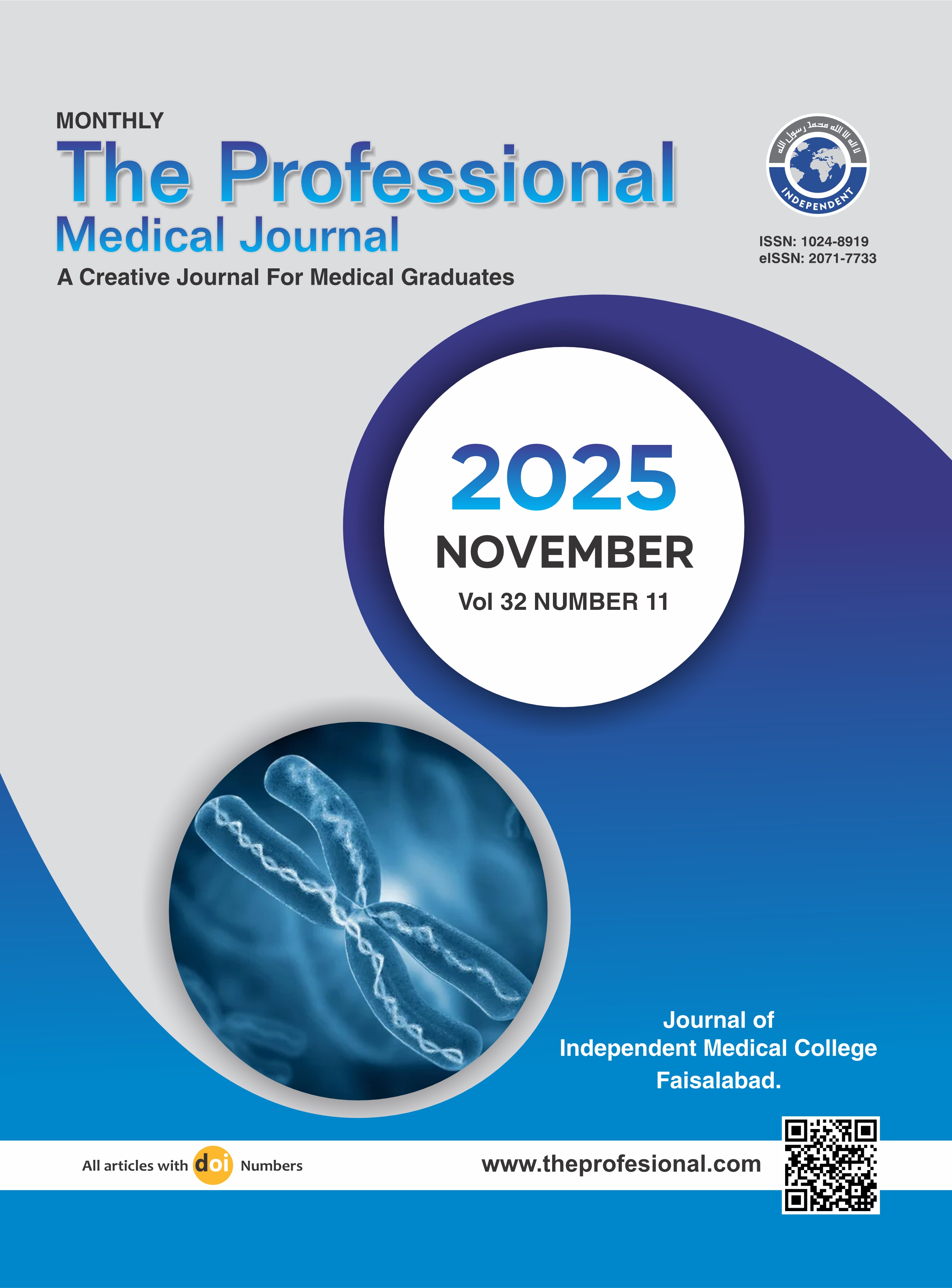Frequency of biliary complications after laparoscopic cholecystectomy.
DOI:
https://doi.org/10.29309/TPMJ/2025.32.11.9849Keywords:
Bile Leak, Complications, ; Laparoscopic Cholecystectomy, Post-cholecystectomy SyndromeAbstract
Objective: To determine the frequency of biliary complications, specifically bile leak and post-cholecystectomy syndrome, following laparoscopic cholecystectomy, and to assess their associations with demographic variables. Study Design: Prospective Observational Study. Setting: Department of General Surgery, Hayatabad Medical Complex, Peshawar. Period: March 2021 to February 2022. Methods: A total of 171 patients aged 20–60 years undergoing elective laparoscopic cholecystectomy were enrolled through convenience sampling. Patients were followed for six months to assess for bile leak and post-cholecystectomy syndrome. Data were analyzed using SPSS version 24, and associations with demographic variables were assessed using the Chi-square test. Results: Bile leak occurred in 19 patients (11.1%) and post-cholecystectomy Out of 171 patients, bile leakage occurred in 19 cases (11.1%) and post-cholecystectomy syndrome in 32 cases (18.7%). Bile leakage was observed in 11 males (14.1%) and 8 females (8.6%), while post-cholecystectomy syndrome was noted in 14 males (17.9%) and 19 females (19.4%). Across BMI categories, bile leak was reported in 6 patients (15.4%) with BMI 20–23, 11 (9.9%) with BMI 24–27, and 2 (9.5%) with BMI 28–30. Post-cholecystectomy syndrome was most common in the 28–30 BMI group (6 patients, 28.6%). None of the associations with age, gender, or BMI were statistically significant (p > 0.05). Conclusion: Biliary complications following laparoscopic cholecystectomy were relatively infrequent and showed no significant association with demographic variables.
Downloads
Published
Issue
Section
License
Copyright (c) 2025 The Professional Medical Journal

This work is licensed under a Creative Commons Attribution-NonCommercial 4.0 International License.


